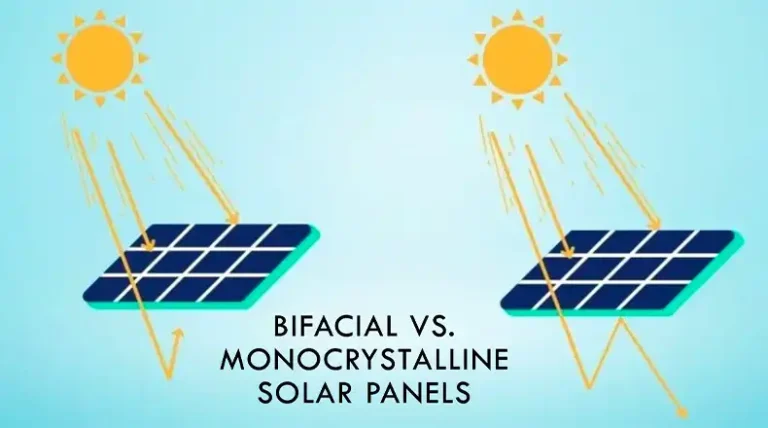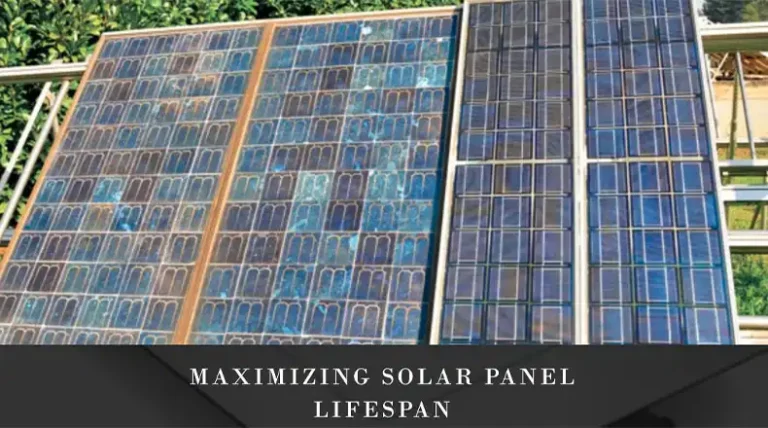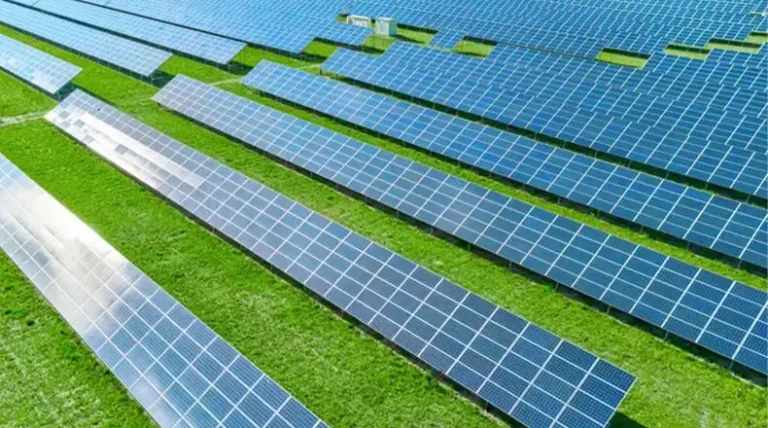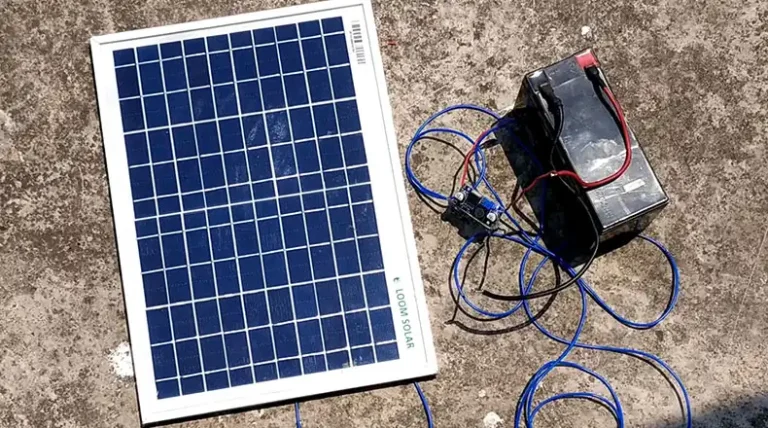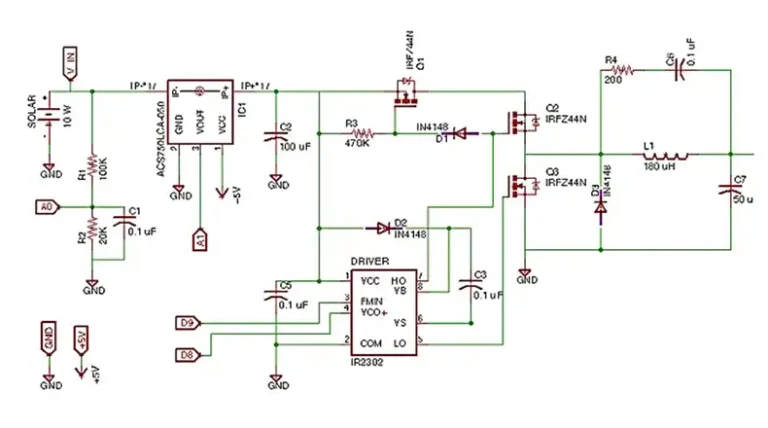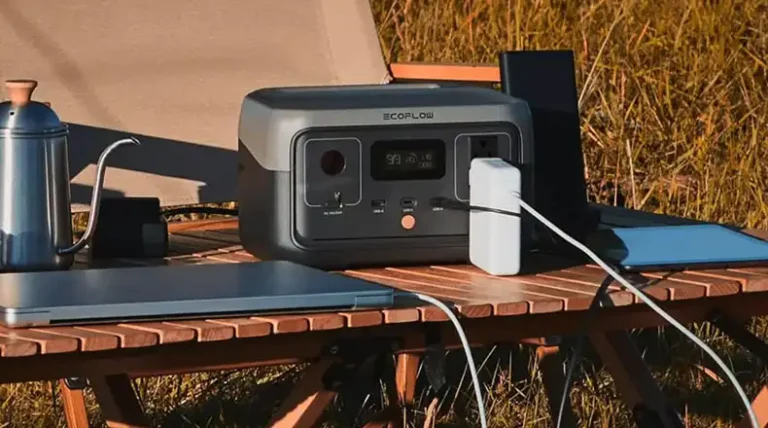Hybrid Solar vs Grid Tied | Full Comparison
The solar energy sector has been growing rapidly, but many homeowners find themselves undecided between going hybrid solar or sticking with a traditional grid-tied system.
Basically, hybrid solar systems combine solar panels with batteries for energy storage, while grid-tied systems feed excess energy straight to the electrical grid. There are advantages and disadvantages to both options related to upfront costs, energy resilience, grid independence, and more.
Don’t worry, I’m here to help you explore how each system works, analyze the costs and savings, and help homeowners decide what’s right for their needs and budget. Stick around as we shine a light on this complex topic!
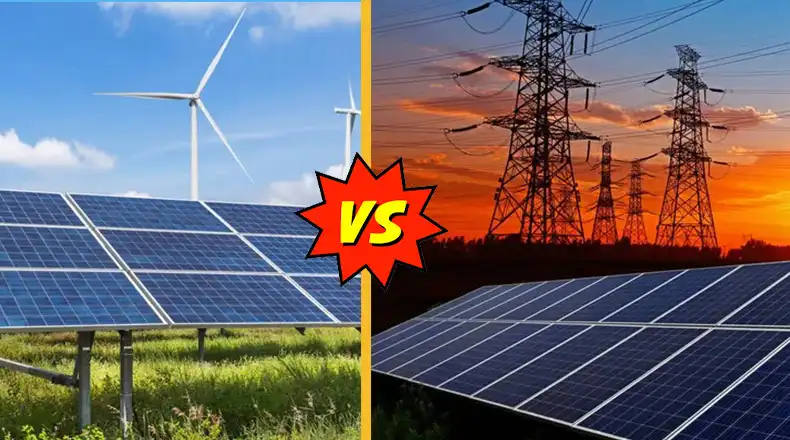
How Hybrid Solar Systems Work
A hybrid solar system utilizes both solar panels and batteries to collect and store energy. During the day, the solar panels generate electricity that first supplies the home’s energy needs. Any excess solar energy gets stored in the batteries for use at night or during grid outages. The system remains connected to the electric grid as a backup power source.
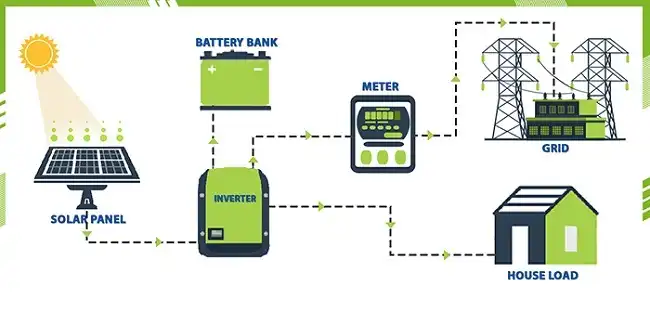
Here are the key components of a hybrid solar system:
- Solar Panels: The photovoltaic (PV) solar panels absorb sunlight and convert it into direct current (DC) electricity. More panels can be added to increase energy production.
- Inverter: The inverter converts the DC electricity from the solar panels into alternating current (AC) that can power home appliances and devices.
- Batteries: Batteries store excess solar energy for use when the sun isn’t shining. Lithium-ion batteries are common for home solar storage.
- Battery Inverter: Another inverter converts DC energy from the batteries into AC electricity for home use.
- Net Meter: This meter tracks both the energy usage from the grid and any excess solar energy fed back to the utility.
- Electrical Panel: The main panel routes AC power from the grid and solar system to the home’s electric circuits.
How Grid-Tied Solar Systems Work
Grid-tied solar systems, also known as net metering systems, are connected to the utility grid and do not use battery storage. The solar panels produce electricity during sunny hours and feed any unused energy directly into the grid. The home pulls electricity from the grid at night.
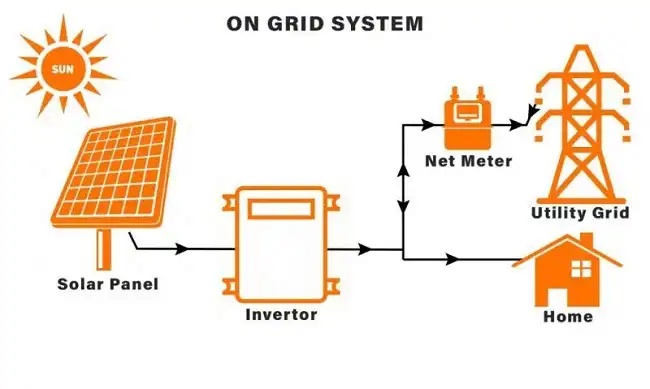
Here are the primary elements of a grid-tied solar system:
- Solar Panels: The PV solar panels convert sunlight into electricity. More panels can increase energy production.
- Inverter: The inverter converts the DC solar power into standard AC electricity.
- Electrical Panel: The main panel routes solar power and grid electricity through the home’s electric circuits.
- Net Meter: This meter monitors both the power consumption from the grid and any excess solar electricity exported to the utility.
With a grid-tied system, the utility grid effectively acts as the battery storage. These systems are less complex and have lower upfront costs because they do not require batteries. However, grid-tied systems do not provide backup power during outages.
Cost Comparison
One of the biggest differences between hybrid solar and grid-tied systems is the upfront cost. Let’s take a closer look:
Hybrid Solar System Costs
- Solar panels – $10,000 to $20,000
- Batteries – $5,000 to $15,000
- Inverter – $2,000 to $4,000
- Battery inverter – $1,000 to $3,000
- Additional hardware and installation – $3,000 to $5,000
Total System Cost: $21,000 to $47,000
The high cost of lithium batteries causes hybrid systems to have a higher price tag. Total costs vary based on system size, solar panel efficiency, battery capacity, and location.
Grid-Tied Solar System Costs
- Solar panels – $10,000 to $20,000
- Inverter – $2,000 to $4,000
- Additional hardware and installation – $2,000 to $3,000
Total System Cost: $14,000 to $27,000
Without batteries, grid-tied systems require a much lower upfront investment. Exact costs depend on system size, solar panel quality, and installation factors.
Federal Solar Tax Credits
The federal investment tax credit (ITC) offers a 26% tax credit for installing residential solar systems. There is no system size limit. This incentive significantly reduces the net costs of going solar:
- Hybrid system after tax credit: $15,500 to $34,820
- Grid-tied system after tax credit: $10,360 to $19,980
The ITC is scheduled to decrease to 22% in 2023 before expiring in 2024. Solar tax credits can also vary by state.
Energy Bill Savings
In addition to the tax credits, homeowners can realize significant savings on monthly energy bills with either solar option.
Let’s compare potential savings from a 6 kW solar system in Phoenix, Arizona:
- Monthly energy bill before solar: $210
- Monthly bill with hybrid solar: $45
- Monthly bill with grid-tied solar: $60
Hybrid Savings: $165 per month, $1,980 per year
Grid-tied Savings: $150 per month, $1,800 per year
Solar battery storage allows hybrid systems to achieve greater energy independence and cost savings. But grid-tied systems still offer substantial bill reductions, thanks to net metering credits.
Savings vary based on location, system size, electricity rates, and other factors like battery vs grid usage. Larger solar systems can lead to 100% zero energy bills.
Battery Backup vs Grid Reliance
One of the main differences between hybrid and grid-tied systems comes down to resilience and energy independence.
Battery Backup
The battery storage in hybrid solar systems provides backup power when the grid goes down. Homes with hybrid systems can maintain power during outages, providing energy security.
Critical loads like lights, refrigerators, internet routers, and health devices can remain online indefinitely, as long as the batteries have sufficient charge. Families with medical needs or other vulnerabilities especially benefit from having resilient solar energy.
Grid Reliance
In contrast, grid-tied solar systems are dependent on consistent grid power. When the utility grid loses power, so do grid-tied solar homes. These systems do not offer backup energy capabilities.
This lack of resilience leaves homes vulnerable during increasingly common weather events and power outages. Upgrading to battery storage can provide necessary outage protection.
Net Metering impacts
Both solar systems use net metering to get credited for surplus solar energy fed into the grid. However, evolving net metering policies are impacting the value of grid exports:
- 42 states + DC have mandatory net metering rules, but some are moving away from retail rate compensation to lower rates that reduce bill savings.
- Utilities are imposing fixed charges, minimum bills, and other fees that undermine net metering.
- Changes to net metering and rate structures devalue grid exports from solar customers.
For grid-tied systems, reduced compensation for excess solar energy limits bill savings and the economic solar incentive. Battery storage provides a way to use more solar energy directly rather than relying on net metering credits.
Prime Locations for Each System
Certain factors like local weather and grid reliability can make one solar system a better fit than the other:
Hybrid Solar Works Best:
- Areas prone to storms and grid failures
- Locations with frequent cloudy days
- Places with expensive electric rates
- Homes with critical energy needs
Grid-Tied Solar Works Best:
- Regions with consistently sunny weather
- Areas with very reliable electricity grids
- Places with inexpensive electric rates
- Homes with minimal backup power needs
Ultimately, hybrid systems are ideal for maximizing solar energy usage and resilience. But grid-tied can be a cost-effective solar solution when grid dependence isn’t a big concern.
Pros and Cons Comparison
| Hybrid Solar | Grid-Tied Solar | |
| Pros | – Battery backup for outages- Greater energy independence- Increased savings from direct solar usage- Minimizes impact of net metering changes | – Lower upfront costs- Simple system to install- Still provides good energy bill savings |
| Cons | – High battery costs- More complex system- May require a larger solar array | – No battery backup- Grid dependent- Exposed to net metering policy changes |
Typical Household Use Cases
| Hybrid | Grid-Tied |
| Families concerned about power outagesHomes with critical medical needsLocations prone to extreme weatherPlaces with unreliable electric gridsRemote, rural households | Urban and suburban householdsAreas with stable, dependable gridsHomes without major backup power needsThose seeking basic cost savings |
Should You Go Hybrid or Grid-Tied?
Deciding between hybrid solar or grid-tied comes down to your budget, priorities, and local conditions.
- If you want maximum energy resilience and independence, go hybrid.
- If you just want to reduce costs while maintaining grid access, go grid-tied.
For many homeowners, the ideal solution is to start with a grid-tied system and add batteries later on. This provides immediate savings while allowing an easy upgrade path to hybrid storage.
Working with a reputable solar installer is the best way to determine the ideal system for your particular home and needs. They can assess your roof, utility policy, and energy usage to design a customized solar solution.
The bottom line is that both hybrid and grid-tied systems have their advantages. With solar tax credits and continually improving technology, there’s never been a better time to harness the power of the sun. Go solar, save money, and help build a clean energy future!
People Also Asked
Which Is Better In Terms Of Costs: Hybrid Or Grid-Tied?
Grid-tied solar is more affordable upfront, costing $14,000 to $27,000. Hybrid solar runs $21,000 to $47,000 due to the batteries. However, tax credits can reduce net costs substantially. In the long run, hybrid systems maximize savings by using more solar energy directly.
How Much Energy Can Hybrid Solar Systems Provide During An Outage?
This depends on battery capacity and load levels. Many hybrid systems can power critical loads like lights, appliances, and medical devices indefinitely. With proper planning and energy management, even whole-home backup is possible.
Can You Take A Grid-Tied Solar System Off-Grid?
Yes, existing grid-tied systems can be upgraded to off-grid hybrid systems by adding solar batteries and a battery inverter. This provides energy independence without replacing the original solar panel infrastructure.
Does My Roof Need To Face South For Solar Panels?
An exact southern exposure is ideal, but solar systems work on any roof orientation. East, west, and even north-facing roofs can effectively generate solar energy at slightly reduced capacity. Custom panel tilting and tracking mounts can further optimize energy collection on non-south roofs.
Closing Thoughts
While the upfront price of solar batteries can be daunting, hybrid systems provide invaluable energy security and maximize the solar energy utilized directly for bill savings. Still, grid-tied PV can be an economic starting point on the solar journey, with the option to add batteries later as needs arise. There’s no one-size-fits-all solution. Working with a solar expert to assess your specific home energy profile is key for deciding between hybrid or grid-tied systems. Whichever route you choose, you can feel good knowing your solar panels are providing clean, renewable energy while reducing electric bills. We applaud you for considering solar, for your home and for the planet. Here’s to a bright future powered by the sun!

